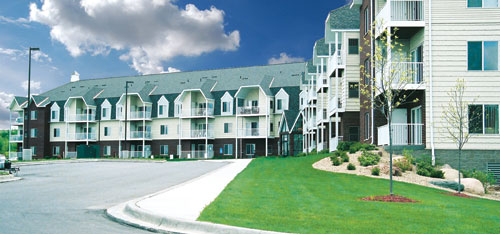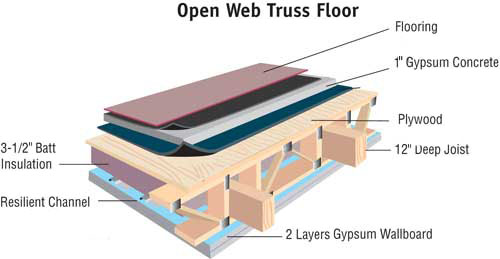Sustainable Rubber Flooring for Healthcare and Education
Just as in other aspects of evidence-based design, such as the importance of good acoustics, comfort, and air quality, research is recognizing the powerful positive effects of color and beauty on human performance. Although the specific needs of healthcare and educational settings might differ—for example, calm and quiet in one, visual stimulation and creativity in the other—the overall positive effects of color and beauty can be effective in both. The organic colors and precision waterjet cutting technology used in recycled rubber flooring make it adaptable to creative designs, with few limits on color, pattern, or use of custom artwork. Since the color is inherent in the material, it can't fade, smear or chip over long periods of heavy use.
| Bard’s Crossing Rosemont, Minnesota | Architect: JSSH | Acoustical Consultant: Veneklasen Associates |
||
When Wensmann Homes, the builders of Bard’s Crossing, planned an 83,000-squarefoot retirement community condominium in a suburb of St. Paul, Minnesota, they designed the floor/ceiling assembly to provide a quiet environment for potential residents. The floor/ceiling design utilized two layers of gypsum board, a resilient channel, 1-inch of gypsum concrete, and a sandwich configuration of recycled rubber resilient soundproofing mat. Mike Vallez, project manager of design and construction for the project builder Wensmann Homes, noted that the recycled rubber product sound insulation “produced the highest IIC ratings of anything we’ve used. We were extremely satisfied with the results.” The open web assembly (see drawing) produced IIC field ratings of 64 with wood, 55 with ceramic tile, and 56 with vinyl. Vallez had worked on four previous projects with Wensmann Homes, and says the sound control results produced at Bard’s Crossing with the recycled rubber product were by far the best. John LoVerde of Veneklasen Associates, who performed the sound testing on the Bard’s Crossing project, noted that he encounters recycled rubber flooring products on nearly a fifth of the jobs he tests, often selected because they have the flexibility to perform at a high level with a variety of assemblies and under a full range of floor toppings.
|
For example, designers of the City Hall Academy at the Tweed Courthouse in New York City used the floor itself to provide an interdisciplinary learning experience centered around the culture and history of the city for the 200 children who attend the school daily (see Figure 3). Recycled rubber was selected for its resilience and sustainability, and overall comfort for students and teachers alike (compared to most other materials, especially those sturdy enough to stand up to use in classrooms, recycled rubber is softer and even warmer to the touch). But an added benefit was the adaptability of recycled rubber to creative use of color and design, all made out of EPDM material with high recycled content. The entire floor is a waterjet-cut Technicolor map of New York City.
The Peyton Manning Children's Hospital at St. Vincent is another example of using recycled rubber flooring to meet practical needs in a creative, artistic way to make a stressful environment welcoming, even fun. (See page 6.)











